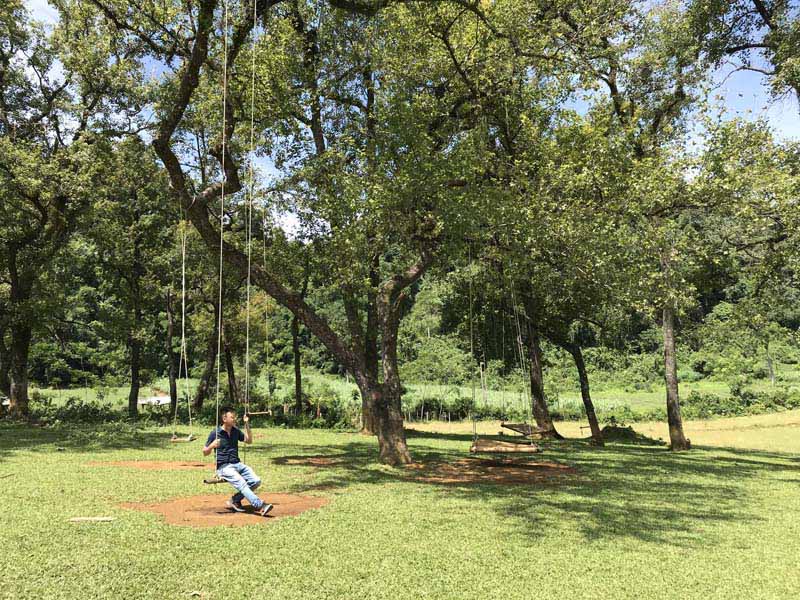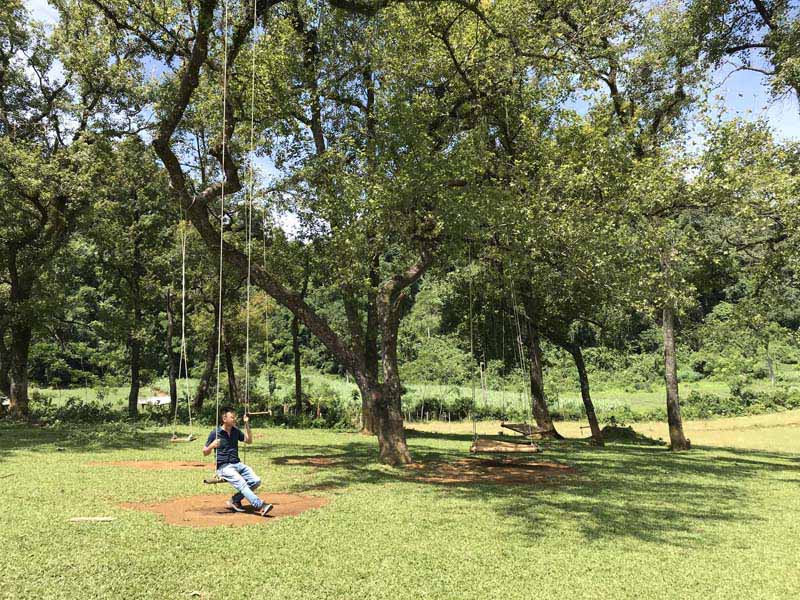


 Bai Bui in Khop Den village, Ngoc
Lau commune (Lac Son) is a favorite destination for many tourists loving to
explore.
Bai Bui in Khop Den village, Ngoc
Lau commune (Lac Son) is a favorite destination for many tourists loving to
explore.
Located 16km from the district center, there are 5 hamlets with 649 households and 3,004 people in the commune, in which 98% of people are the ethnic minorities. In recent years, Lac Son highland has been known as an interesting tourism destination with the majestic natural scenery, fresh and quiet space, and the traffic is not as difficult as it used to be. Bai Bui in Khop Den hamlet, which is 9.4 hectares wide, is well-known for its peaceful landscape, its poetic lawns soaring in sight and dozens of ancient hundred-year-old trees. The poetic and rustic beauty of Bai Bui is chosen by many groups of young people for picnic, camping, taking photos ... There are up to 500 turns of visitors a week.
Along with the beautiful scenery of Bai Bui with the temperature of 5 – 7 degrees lower than the average temperature of the district, the fresh and quiet air is also a tourism attraction. Besides, this place is also a living community of the ethnic minorities with bold identity and unique specialties such as chicken raising on the hills, indigenous pig, sticky rice ..., bringing the unforgettable experiences to visitors. From those advantages, the commune has gradually been exploiting the tourism services, creating more income for the local people and developing the local economy.
Mr. Bui Van Do, the Vice Chairman of the People's Committee of the commune says "Taking advantage of the natural conditions and landscapes for developing economy, increasing the income, eradicating hunger and reducing poverty, the commune has advised and proposed all the levels to build plans to attract investment, upgrade infrastructure for tourism development, and actively mobilize people to preserve the cultural identity, the clean and beautiful landscape and environment to develop tourism services, contributing to the economic development”.
Currently, the 4-kilometer road from the commune center to Bai Bui has been paved with gravel, and it is no longer difficult to travel, and more and more tourists are paying visit to this place. The people in the area are well aware of the potential value of Bai Bui. As a result, they keep and look after the old trees and surrounding landscapes together to prevent any invasive behavior. There is no restaurant in the commune to serve tourists, but the people still accept to order meals, arrange accommodation for the tourists stay overnight if requested. However, the local services are not enough to retain tourists for many days. A lot of companies and business firms have asked to invest in a community and eco-tourism in Bai Bui to develop economy and create jobs for the local people. The commune has submitted to appropriate authorities for consideration.
The outstanding landscapes in the Lac Son highlands including Mu waterfall (Tu Do commune), Bai Nha (Ngoc Son commune), Bai Bui are in the group of the favorite destinations for travelers who love exploring. The rich and diverse natural scenery, the unique specialties imbued with the national identity have created the attraction of Lac Son highland for the tourists inside and outside the province. Hopefully, in the coming time, Ngoc Lau highland will continue to be paid attention to invest and support to awaken the potential tourism that is still "sleeping”.